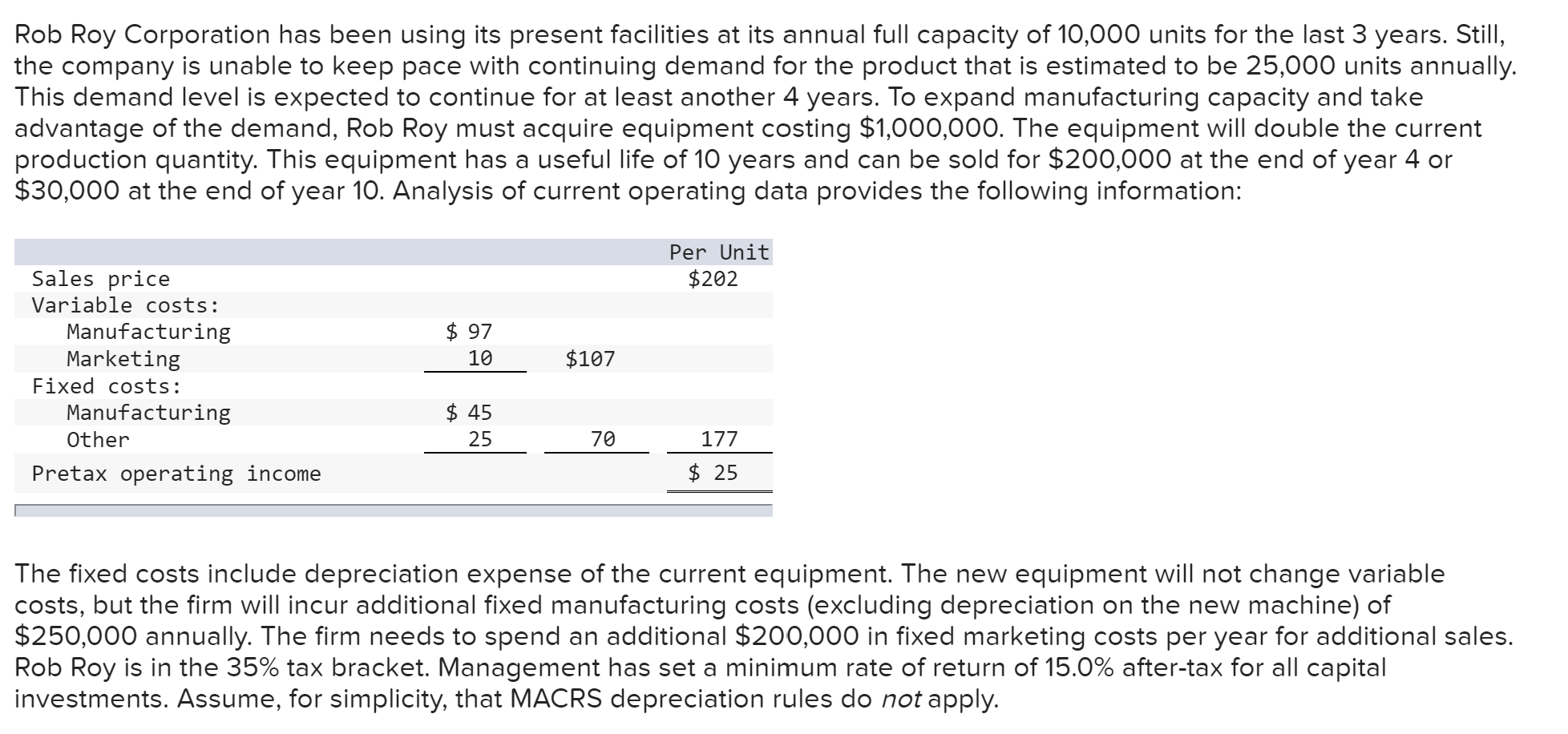Question
Required: (Answers belong in chart below) 1. Assume that the equipment will be depreciated over a 4-year period using the straight-line method. What effects will

Required: (Answers belong in chart below)
1. Assume that the equipment will be depreciated over a 4-year period using the straight-line method. What effects will the new equipment have on after-tax operating income in each of the 4 years?
2. What effect will the new equipment have on after-tax cash inflows in each of the 4 years?
3. Compute the proposed investments payback period (in years) under the assumption that after-tax cash inflows occur evenly throughout the year. (Round your answer to 2 decimal places.)
4. Compute the accounting (book) rate of return (ARR) based on the average investment. (Round your answer to 2 decimal places.)
5. Compute the net present value (NPV) of the proposed investment. (Use both the built-in function in Excel (NPV) and the tables presented in Appendix C to determine the present value of the after-tax cash flows.) (Round your answer to nearest whole dollar amount.)
6. Compute the internal rate of return (IRR) of the proposed investment using the built-in IRR function in Excel. (Round your answer to 2 decimal places.)
7. Compute the modified internal rate of return (MIRR) of the proposed investment using the built-in MIRR function in Excel. In responding to this requirement, you might find the following sources to be helpful: MIRR Function and/or IRR in Excel). (Round your answer to 2 decimal places.)
8. Management has decided to invest in the new equipment but is unsure of the reliability of some of the estimates and as such has asked some what-if questions. Treat each of the following two cases independently.
a. By how much can the unit variable cost for units produced by the new equipment increase and still justify the purchase of the equipment (i.e., have the investment generate an after-tax IRR of exactly 14%, its cost of capital)? (Do not round intermediate calculations. Round your final answer to 2 decimal places.) (Hint: the present value annuity factor from Appendix C Table 2 for 4 years, 15.00% is 2.855.)
b. The company is anticipating an increase in competition. Management believes that, in response, it will have to reduce the selling price of the product. By how much can the firm decrease the per-unit selling price (for all units sold) and still be able to justify the purchase of the new equipment? What percentage decrease in selling price does this represent? (Round your answers to 2 decimal places.)

Step by Step Solution
There are 3 Steps involved in it
Step: 1

Get Instant Access to Expert-Tailored Solutions
See step-by-step solutions with expert insights and AI powered tools for academic success
Step: 2

Step: 3

Ace Your Homework with AI
Get the answers you need in no time with our AI-driven, step-by-step assistance
Get Started


